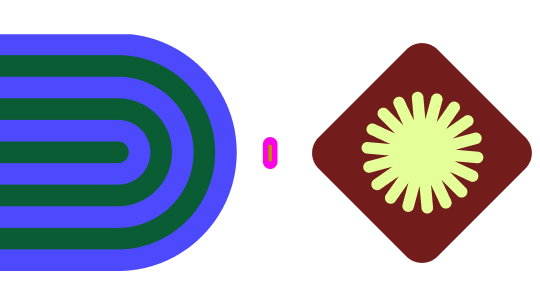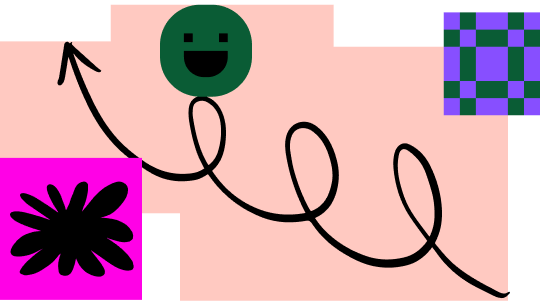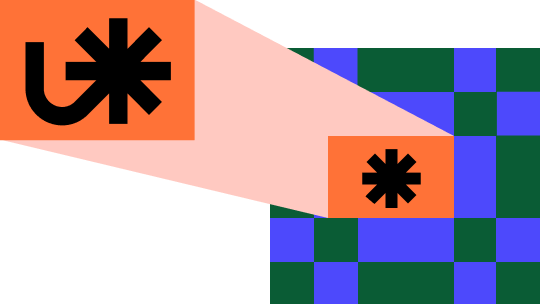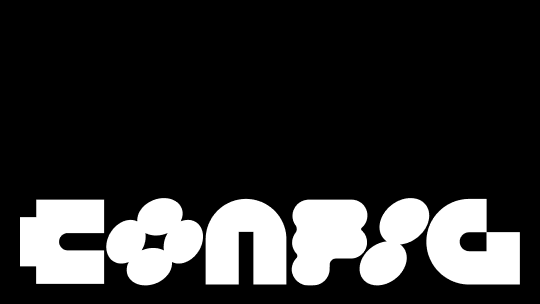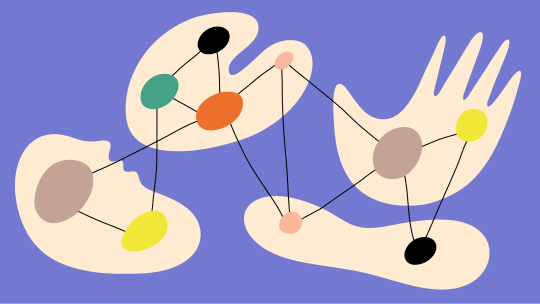Make a customer journey map with FigJam

Imagine this: You’ve spent countless hours designing the perfect product and crafting a compelling marketing strategy, only to watch customers mysteriously abandon their shopping carts. Before you rush to overhaul your product or marketing efforts, consider taking a closer look at the journey your customers are on—and where they might be getting stuck.
Customer journey maps can guide you to pinpoint roadblocks in the customer experience, revealing untapped opportunities and solutions that can turn casual visitors into passionate brand advocates.
Read on to learn:
- What a customer journey map is
- The stages of the customer journey
- How to create a customer journey map
- Why journey mapping is important
- Customer journey map examples
What is a customer journey map?
A customer journey map is like a GPS for your customer experience, visually charting the steps users take when interacting with your brand. It helps you navigate all the twists, turns, and speed bumps your customers encounter along the way.
Customer journey maps outline customer actions, emotions, and touchpoints, giving you valuable insights into your customers’ behavior and showing you where to improve or enhance their experience.
For instance, a food delivery company may use a customer journey map to outline the process a user takes when ordering a meal on its app. By mapping out each stage—from browsing food options to tracking the delivery—the company can spot potential pain points, like long wait times. With this information, they can then fine-tune the process to ensure quicker deliveries and happier, returning customers.
What’s included in a customer journey map?
A customer journey map includes the following components:
- User personas. User personas represent your ideal customer and give you insights into the motivations and needs of the customer segment you’re trying to target.
- Stages. Every journey map outlines the phases a customer goes through, from initial discovery to post-purchase interactions.
- Touchpoints. Touchpoints are all the direct and indirect interactions a user has with your brand throughout each stage of their journey. Examples include your website, mobile app, email, social media, customer support, online forums, and even word of mouth.
- Pain points. Journey maps highlight any challenging or frustrating encounters a user faces during their journey. Identifying these pain points is crucial for improving the customer experience.
- Actions, thoughts, and feelings. This includes the different actions customers take, such as ordering a meal or adding items to a shopping cart. It also includes the specific emotions they experience at each stage, like frustration with delayed deliveries.
- Opportunities and learnings. These are the valuable insights and takeaways you have after creating and analyzing a customer journey map. They can reveal areas for improvement, identify new opportunities, or deepen your understanding of customer needs and behaviors.
Stages of the customer journey
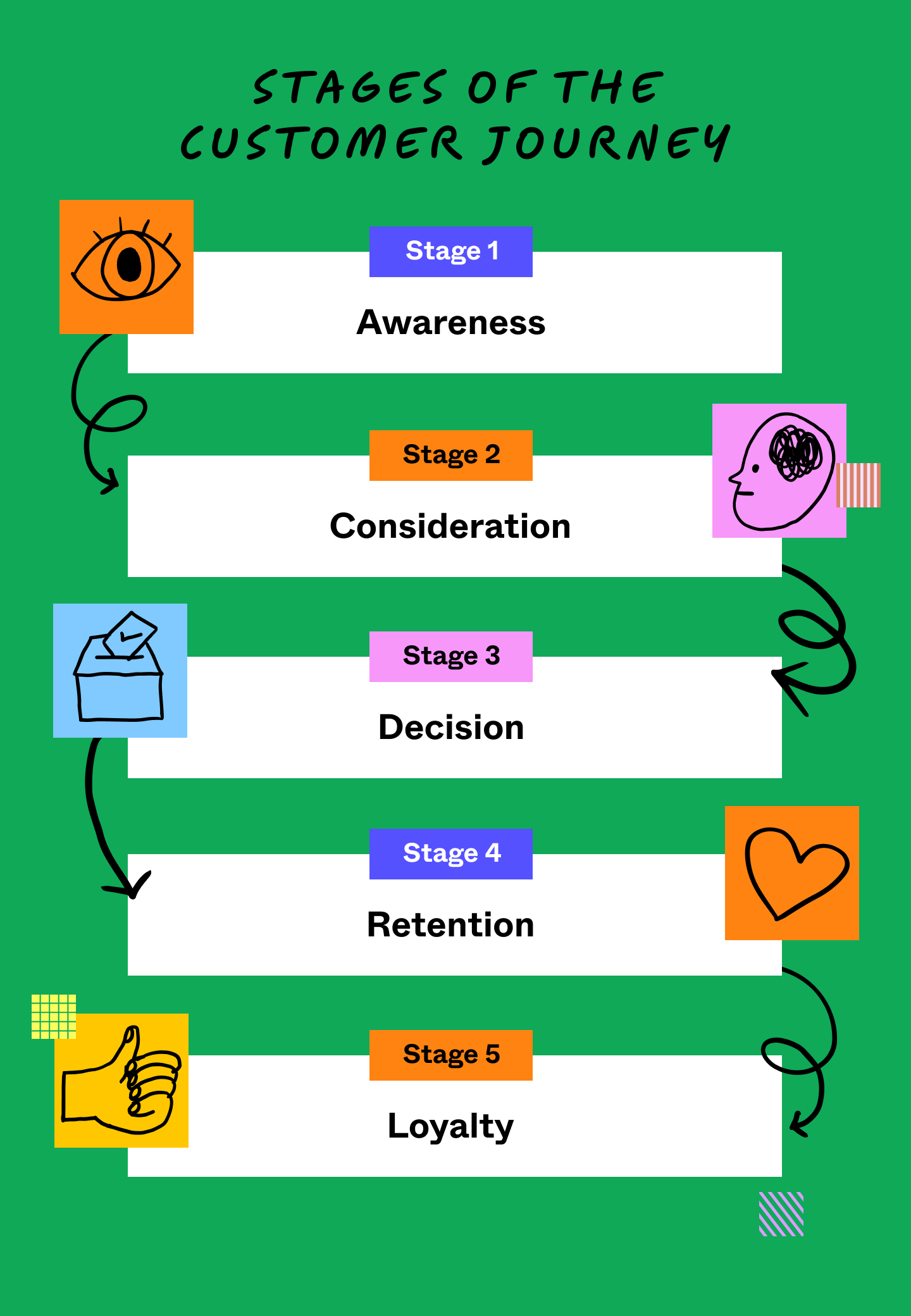
Understanding each stage of the customer journey is essential for effective mapping. Each stage offers unique touchpoints, actions, and emotions that shape the overall customer experience.
The stages of the customer journey include:
- Awareness. The customer becomes aware of a problem or need and starts researching potential solutions.
- Consideration. The customer identifies the type of product or service they need and compares options.
- Decision. The customer chooses a solution (your product or service) and is ready to make a purchase.
- Retention. After making a purchase, the customer receives ongoing support from the brand to ensure satisfaction and continued engagement
- Loyalty. The customer builds an emotional connection with your product or service, becoming a brand advocate.
Five steps to create a customer journey map
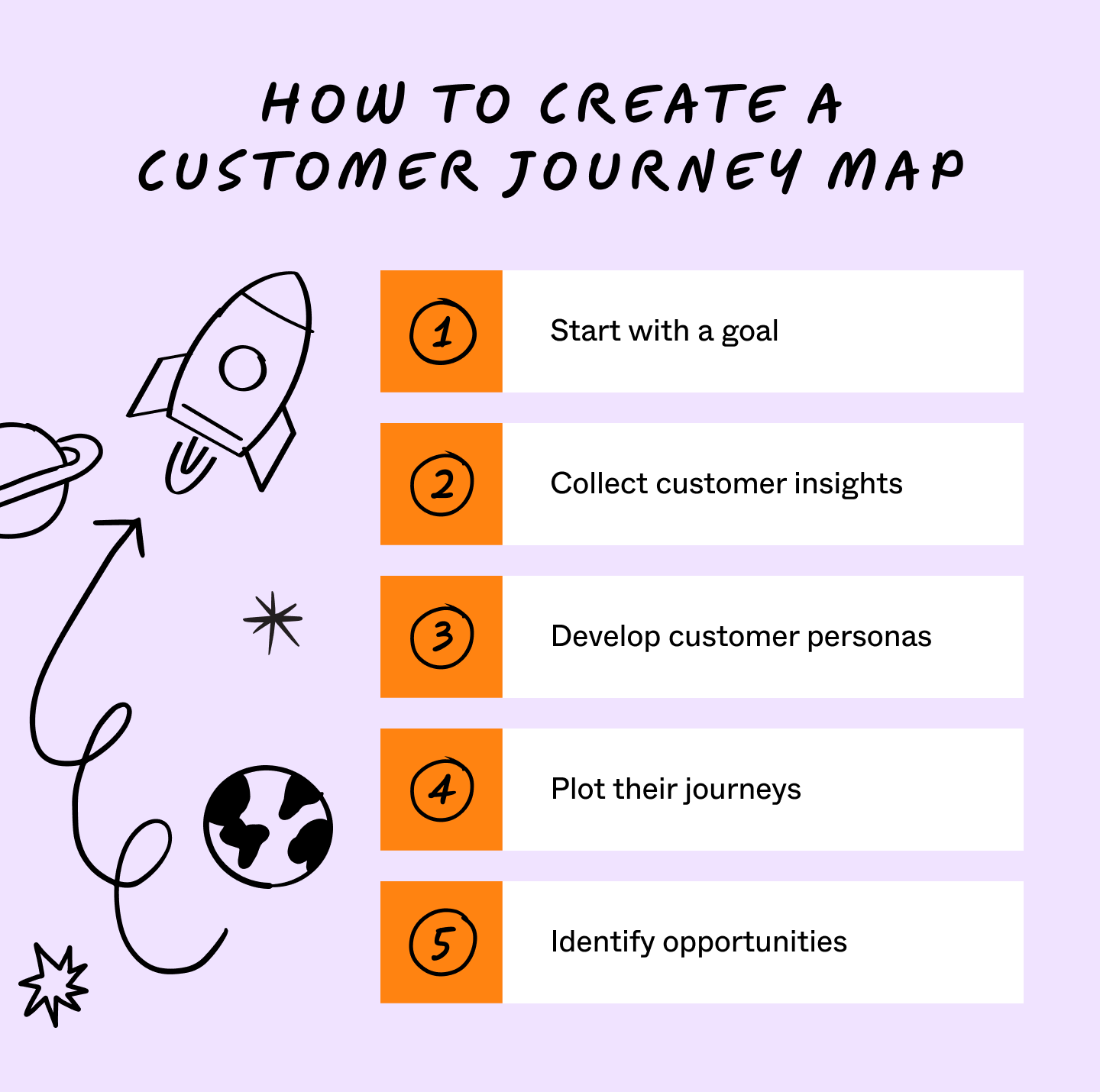
Your customer journey map doesn’t have to be elaborate to be effective. Follow these five steps to outline your customer journey map
Step 1: Start with a goal
Define the specific goal you hope to achieve, whether it’s solving a problem or exploring an opportunity. What do you need to know about your users to improve the customer experience? Is there a customer behavior you’re trying to understand, like abandoning a full shopping cart? Or are you looking for ways to win customers on TikTok? Or maybe you’re just looking for new ways to personalize the customer experience and encourage repeat business.
Once you’ve set your goal, identify the specific customer segment you’re targeting. This will help you focus your efforts and ensure your journey map resonates with their experiences.
Step 2: Collect customer insights
Gather any relevant customer data to identify key touchpoints and actions within the customer journey. Website and app analytics can help track behaviors like cart abandonment, while social media polls might reveal customer habits and preferences.
Since customers interact with brands through multiple channels, collect qualitative customer data through user interviews. By having customers share their experiences, you can pinpoint critical moments in their journey.
Step 3: Develop customer personas
Customers have various needs and behaviors, making personas essential for an effective customer journey map. Think of personas as the characters navigating your map—each taking opposite paths, making specific decisions, and experiencing unique emotions before they reach their destination.
Personas help you empathize with customers, allowing you to create a more detailed and customer-centric journey map. Outline common customer behaviors, then refine personas with research, detailing their needs, goals, and motivations. User testing can help you validate and refine these personas.
Step 4: Plot their journeys
Now it’s time to take a ride with your customers—from brand awareness and consideration through purchase, support, and brand advocacy. Identify where customer personas take diverging paths, leading to different experiences and outcomes.
Include the key touchpoints across brand channels, such as a customer support chatbot or email promotions for an e-commerce site. Add the unique thoughts, feelings, and actions your customer persona experiences at each touchpoint.
Step 5: Identify opportunities
Based on your insights, identify areas for improvement or ways to enhance the customer experience. Ask yourself these questions to uncover potential opportunities:
- What common pain points or obstacles do customers encounter, and how can you eliminate them?
- Are there any customer needs you should address?
- Can you add touchpoints at each stage to create more personalized experiences that drive engagement and conversions?
- How can you reward customers to encourage customer loyalty?
- Are your marketing and sales strategies tailored to address customer needs and pain points at the right stage of their journey?
The team at Lextech also recommends sharing your map with user groups to compare their journey with the one you’ve documented. This helps uncover missed steps or new opportunities you may have overlooked.
By analyzing your journey map, you can create an action plan to implement changes that align with your initial goal and foster customer loyalty.
Benefits of a customer journey map
Here are some ways customer journey maps can benefit your business:
- Enhances the customer experience. By putting yourself in your customers’ shoes, you gain a deeper understanding of their expectations, leading to more personalized interactions and experiences tailored to each customer segment.
- Boosts customer retention. A customer journey map helps you identify moments where your brand can shine, turning potential pan points into positive experiences. This leads to better product development and fosters long-term loyalty.
- Drives change. Journey maps include data-driven insights that highlight areas for improvement. These insights make it easier to get stakeholder buy-in and implement impactful changes to enhance the customer experience.
- Promotes collaboration. Customer journey maps help build a shared understanding of customer experiences across teams. This unified vision ensures that cross-functional teams work together to deliver consistent and cohesive interactions and experiences.
- Sparks innovative ideas. By uncovering customers’ frustrations, feelings, and behaviors, journey maps help identify unmet needs. This can help you brainstorm innovative ideas that can transform your current customer journey and inform future improvements.
Customer journey map examples
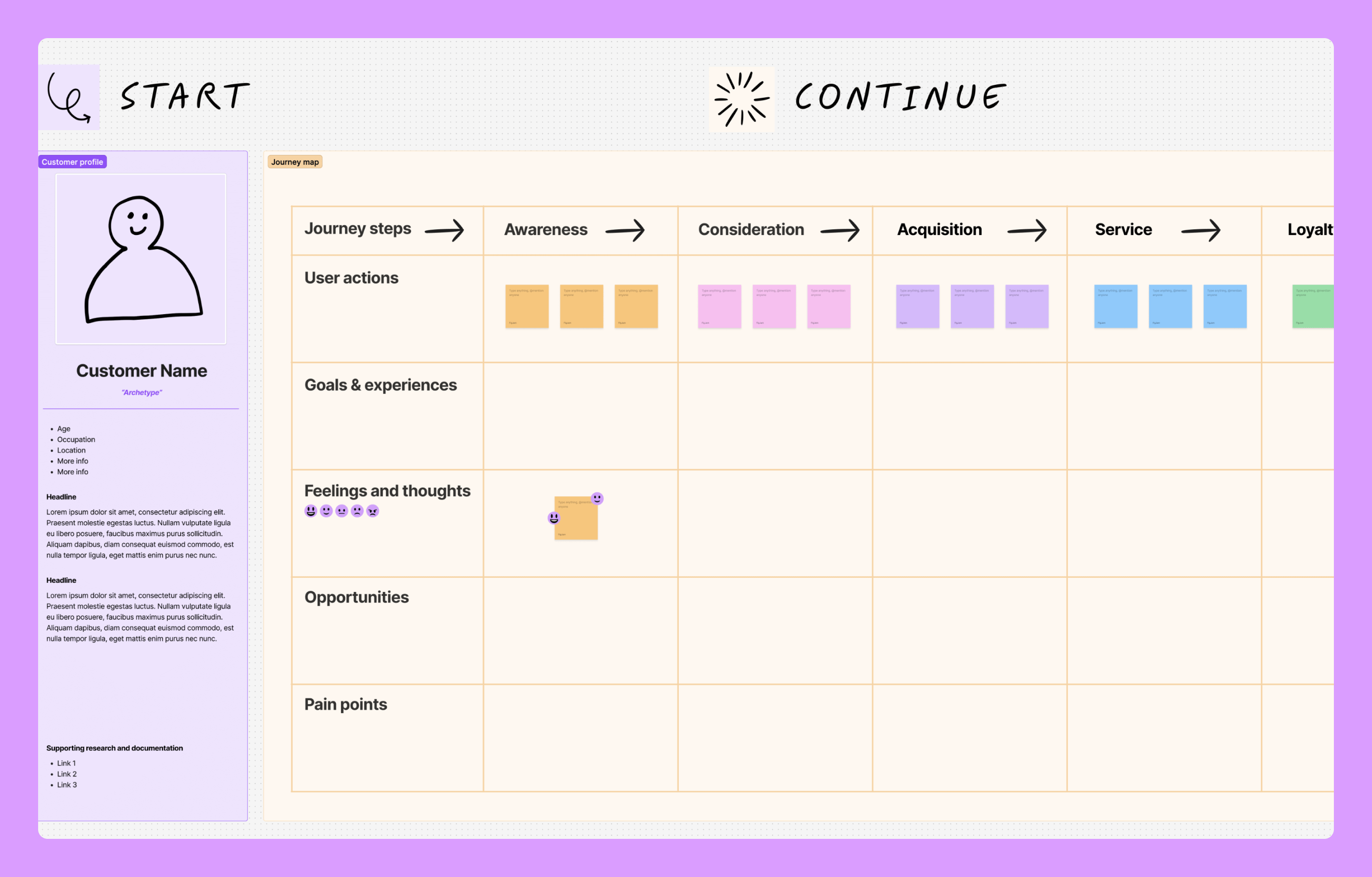
Here are two examples that illustrate the potential insights and opportunities customer journey maps can reveal.
Example 1: Food delivery app
Let’s revisit the food delivery app scenario and create a customer journey map to identify ways to improve the experience for users looking for quick meal options.
In the awareness stage, the customer realizes they’re hungry and need a solution. As they move into the consideration stage, your customer journey map might uncover the following:
- Customer persona: Bill, a busy (and hungry) working professional
- User goals: Find food options quickly, compare prices and delivery times
- Touchpoints: Restaurant pages, search bar, reviews and ratings page
- Actions: Browse options, read reviews and ratings, save options for later
- Feelings and thoughts: Hungry, impatient, skeptical about food quality
- Pain points: Limited food options, delivery times not displayed in search results
- Opportunities: Provide more filter options to improve searchability, include delivery times in search results, sort by the fastest delivery times, offer curated recommendations based on past searches or restaurant saves
The consideration stage is critical for keeping customers engaged and preventing them from exploring competitors. By optimizing search and filters, the food delivery app can help users quickly find their ideal lmeal, reducing the likelihood of abandoning their search.
Example 2: Shopping app
In this example, imagine you’re using a customer journey map for an online clothing app. Your objective is to build stronger relationships with your customers and enhance customer loyalty.
The customer has made their purchase and has just received their items. During the retention stage of the customer journey, your map might uncover the following:
- Customer persona: Alex, a returning customer
- User goals: Receive product on time, share review via app or social media
- Touchpoints: Delivery email, reviews page, social media
- Actions: Wears product, leaves product review, returns items if needed
- Feelings and thoughts: Excited about the new item, satisfied with the purchase, disappointed that order didn’t come in time for their event
- Pain points: Shipping delays, product quality issues
- Opportunities: Real-time order tracking and updates, free returns, discounts for returning customers, personalized recommendations based on past purchases
Even repeat customers have frustrating encounters with brands they love. This example includes opportunities for recovery and turning those moments into a chance to strengthen customer relationships, like offering discounts.
Start customer journey mapping with FigJam
Customer journey maps are essential tools for better understanding your customers so you can create better experiences. Ready to start journey mapping? Figma can help.
Here’s how:
- Use FigJam’s intuitive and easy-to-use customer journey map template to map out user paths and identify areas for improvement—even the team at Netflix uses FigJam to map complex user journeys.
- Browse Figma’s template gallery for additional templates that can enhance your journey mapping process, such as an empathy map template to help you understand your customers’ unique perspectives and feelings.
- When you’ve uncovered new opportunities, use Figma’s design tool to create prototypes that stimulate user interactions and touchpoints.
Start brainstorming and diagramming with FigJam.
Keep reading
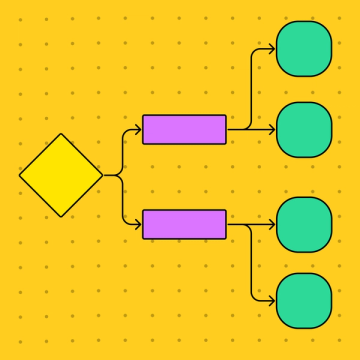
How to create a flow chart
Having a flow chart can help visually represent actions or people in a complex situation.
Learn more
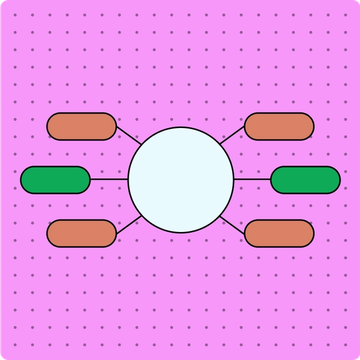
How to mind map
How can you remember the important stuff and forget the rest? Learn how to mind map, and you’ll learn how to think more clearly.
Learn more
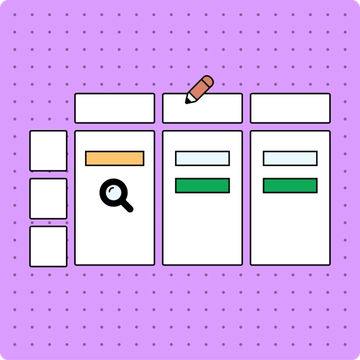
Alignment charts explained
Ready to sort in a more engaging way? Our alignment charts explained guide will walk you through how to create an alignment chart of your own.
Learn more
